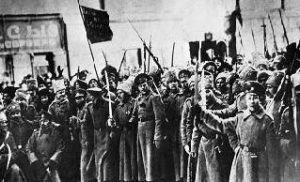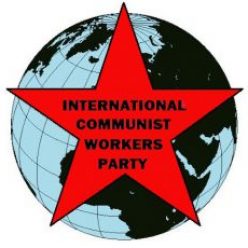Communists Must Stay With The Masses – and Mobilize Them for Communism

The hated Russian Tsar had abdicated. The pro-capitalist Provisional Government, which included Mensheviks (socialists), had enacted liberal political reforms.
But Russian soldiers were still dying at the front. Urban workers starved amidst food shortages and price-gouging. Rural workers waited in vain for the land they were promised.
Workers’, soldiers’ and peasants’ soviets (councils) mushroomed. Anarchists and socialists led most of them. But support for the Bolsheviks (communists) was growing among soldiers, sailors and workers in the capital, Petrograd.
The Congress of Soviets convened on June 3rd in Petrograd. Sharp struggle erupted.
Mensheviks, defending the Provisional Government, wanted the Bolshevik-led Soldiers’ Soviets disarmed. Bolsheviks (13% of voting delegates) rejected the government and demanded “all power to the Soviets.” The Mensheviks won the Congress – but not the masses.
The Bolsheviks called for a mass demonstration. Mensheviks, supporting a government ban, told factory workers to stay away. The workers were enraged.
Cossacks rejected Menshevik appeals to help crush the Bolsheviks. Whole military units followed Bolshevik leadership. They agreed to support the ban only because Bolshevik leaders told them to. Workers and sailors wanted to fight for Soviet power – the Bolshevik demand – but party leaders held them back.
Mensheviks, isolated, dropped their disarmament demand. They called for a June 18th demonstration. That day, the government launched a fresh and disastrous war offensive. The Bolsheviks led anti-war marchers, 400,000 in all, in major Russian cities.
The Putilov munitions workers went on strike. Bolsheviks organized workers from 70 other factories to meet with them. But they called for “restraint,” waiting for support that wasn’t coming from the Congress of Soviets.
Communist Soldiers and Sailors: Key to Revolution
Masses of soldiers and sailors were demanding the immediate overthrow of the government. Entire divisions were arrested for disobedience. The 1st Machine Gun Regiment defied orders to go to the front. They met to discuss armed insurrection, then marched on Petrograd.
The Soviet Executive Committee was now part of the Provisional Government. It told soldiers to go home. Instead, they marched, fully armed, to the factories. Soon tens of thousands loudly demanded “All power to the soviets!”
The Bolsheviks organized food and lodging for rebel soldiers. Defying party leaders’ wishes, the Bolshevik Military Organization helped spread the revolt to the working-class districts and the Kronstadt sailors. They too called for the overthrow of the Provisional Government. The 2nd Machine Gun and 3rd Infantry Regiments joined the rebellion.
Bolshevik leaders tried to cool things off. But on the night of July 3rd, thousands of workers marched to Bolshevik headquarters. The Petrograd party committee then reversed its position. It joined the Bolshevik Military Organization in leading the demonstration. But party leaders still tried to channel the protest into electing delegates to present demands to the Provisional Government.
By this time the Bolshevik Party in Petrograd had grown from 2000 members (in February) to over 32,000.
Socialists and capitalists in the Provisional Government attacked the Bolsheviks for the mass uprising. They organized troops from the provinces to come suppress it. They attacked the masses, killing hundreds. They destroyed Bolshevik presses, which were still calling for restraint.
Hundreds of thousands of workers were in the street, in a massive general strike, under the Bolshevik slogan “all power to the Soviets.” But the soviets didn’t want power!
Some Bolsheviks argued for their party to lead the masses to revolution. The majority – including Lenin – thought they weren’t ready.
In a sense they weren’t, but not for the reasons they thought. They hadn’t prepared the masses for COMMUNIST power. They had deferred any mass discussion about what communist society should be like. In this way, they had ideologically disarmed the revolutionary masses.
Imagine if the Bolshevik slogan had been to “mobilize the masses for communism” instead of “all power to the soviets”!
The government squashed the rebellion with mass terror and anti-communist propaganda. But an All-Russia Bolshevik congress weeks later represented 240,000 party members. It declared peaceful revolution impossible and agreed for the first time on the principle of “democratic centralism.”
Lenin said, two days after the crisis, that “Mistakes are inevitable when the masses are fighting but the communists remain with the masses, see these mistakes, explain them, try to get them rectified and strive perseveringly for the victory of class consciousness over spontaneity.”
But the Bolsheviks themselves made the most critical mistake. They thought that achieving communism required a “socialist stage” with a Soviet government (“state”) separate from the party. Instead of fighting for “power to the soviets,” they should have organized soldiers, sailors and factory workers to mobilize the broader masses to fight directly for communism.
Would that have made it possible to seize and build communist power in July 1917 or even in November 1917? We’ll never know. But we should be ready when our time comes.

